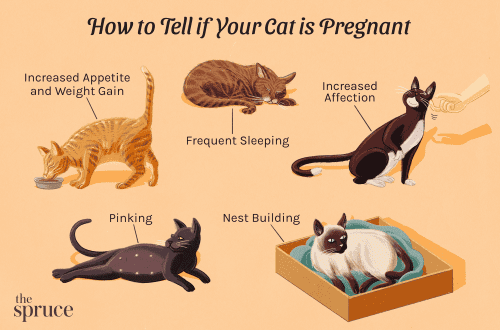
Causes of blood and mucus in the feces of a cat or cat and possible ways to eliminate them
The well-being and health of a pet depends entirely on its owner, who must not only feed the animal every day, but also monitor its health. To do this, you should periodically check that urine and feces do not contain blood. If a cat begins to meow loudly during bowel movements, it means that something is bothering her. And bloody stools can be a symptom of a variety of pet health problems.
Contents
Causes of blood in the stool in a cat
In natural products, blood can only get from the gastrointestinal tract. A more precise location of damage can be determined if pay attention to its color.
Bright red color of blood
- The reason for the appearance of this color of blood in the feces of a cat may be a foreign object that the animal has swallowed and which is trying to come out along with the feces. Often kittens play with various sharp objects or pebbles that can cause serious injury to the gastrointestinal tract. The pet at this time becomes restless and his temperature may rise.
- Injury to the gastrointestinal tract of a cat can also be improperly selected food. An adult animal can scratch the stomach with a piece of bone, and a small kitten with dry food, which he did not chew well.
- Constipation is another reason for the appearance of red blood in the feces of a cat. The feces harden and the act of defecation causes pain to the pet. The anus is injured in the process of emptying, and blood appears in the stool. If your cat is constipated, give a laxative and make sure she always has a bowl of fresh water available. In case of prolonged constipation, the animal must be shown to the veterinarian.
Helminthiasis – the cause of the appearance of blood
The fact that helminths settled in the body of a cat says brown blood. Most often this can happen with an animal picked up on the street or with a pet in contact with stray cats.
- With helminthiasis, a cat may experience a decrease in activity, lethargy, diarrhea, vomiting, and nausea. At the same time, the pet does not refuse food.
- In this case, the animal should be treated with two courses of anthelmintic drugs.
- As a preventive measure, anthelmintics are recommended for domestic cats twice a year.
The main thing, choose the right drug and follow the dosage. If such symptoms are observed in a cat that definitely cannot be infected with helminths, then you need to contact your veterinarian.
Exacerbation of pancreatitis.
Exacerbation of pancreatitis can also give similar symptoms. In this case, the cat will need to be put on a strict diet and remember that the gastrointestinal tract is its weak point. The diet for such an animal must be made more carefully and competently.
Allergic reactions.
One of the reasons for the appearance of blood in the feces of a cat may be an allergy to food. Manufacturers often add cornmeal, natural flavors and various stabilizers to dry food. Therefore, you can try to change the food, and if there are changes, then it is better to forget about the old food. Another option is to switch to all-natural foods.
Colitis
Blood and mucus in the cat’s stool most often indicate a disease such as colitis.
- During its exacerbation in an animal, constipation alternates with diarrhea, and pain appears in the lower abdomen.
- Feces change color and smell.
- In advanced cases, the pet’s metabolism is disturbed, and he loses weight.
- Colitis can be provoked by stressful conditions, infections, allergies, malnutrition, worms.
Ignoring this problem endangers not only the health of the cat, but also her life. Therefore, it is necessary to consult a doctor who will need to take the pet’s feces for analysis. Only a veterinarian can prescribe the correct treatment and stabilize the condition of the animal.
Neoplasms and tumors.
Another reason for the appearance of blood in the stool is a neoplasm and a tumor. To refute or confirm this version is possible only with the help of ultrasound and biopsy, which is done under anesthesia. The course of treatment for the cat will be prescribed by a doctor.
When to See a Veterinarian
Contact a specialist needed if:
- The pet began to go to the toilet much more often.
- When trying to empty the animal is very tense.
- In the stool more than once, blood was seen larger than one small speck.
Often, the presence of blood can be just one of the signs of a disease in a cat. If she has other symptoms, then you should rush to the doctor.
- Diarrhea.
- Vomiting.
- Frequent urination.
- Rapid weight loss.
- Lack of appetite.
- Increased thirst.
- Apathy.
The doctor will diagnose and identify the cause of all these symptoms.
Diagnosing Causes of Bleeding in Cats
Doctor first can ask some questionsto understand why a cat has blood or mucus in the stool.
- Does a pet ride on carpets? (this behavior of the animal most often indicates problems with the anal sinuses).
- Has the cat’s anal area been injured by a fall, blow, or bite from another animal?
- Does the cat eat natural food? If yes, then which one?
- Has the animal’s diet changed recently?
- Could the pet swallow a bone, an inedible object, or eat spoiled food?
Having heard the answers to all questions, the doctor can immediately understand the cause of the disease, or prescribe additional diagnostic procedures.
- Analysis of feces.
- Analysis of urine.
- An extended blood test.
- Examination of the rectum.
- Analysis of the profile of chemicals in the blood.
- Colonoscopy.
- Ultrasound or x-ray of the abdominal organs.
Depending on the test results, the doctor will prescribe treatment.
Possible treatment
To help your cat’s condition, your veterinarian may recommend some of the following procedures:
- Diet to reduce the burden on the intestines.
- Antihistamines for parasites.
- Introduction to the diet of the animal a large amount of liquid.
- Drugs that slow down the passage of food through the intestines.
- Antibiotics if pet has a bacterial infection.
The presence of mucus or blood in the cat’s stool can also be symptom of liver disease, stomach ulcers and other problems in the cat’s body. It is not necessary to let everything take its course if the pet has such alarming symptoms. But there is no need to panic in advance. To determine the exact diagnosis, you must contact your veterinarian, who will prescribe the appropriate treatment.





